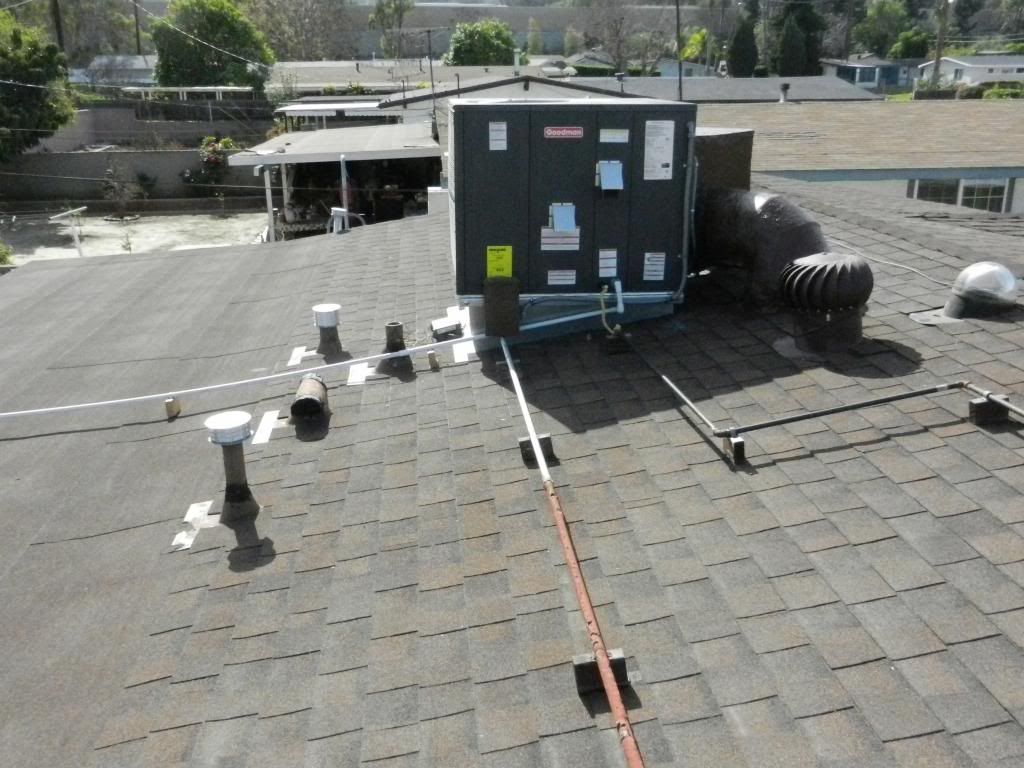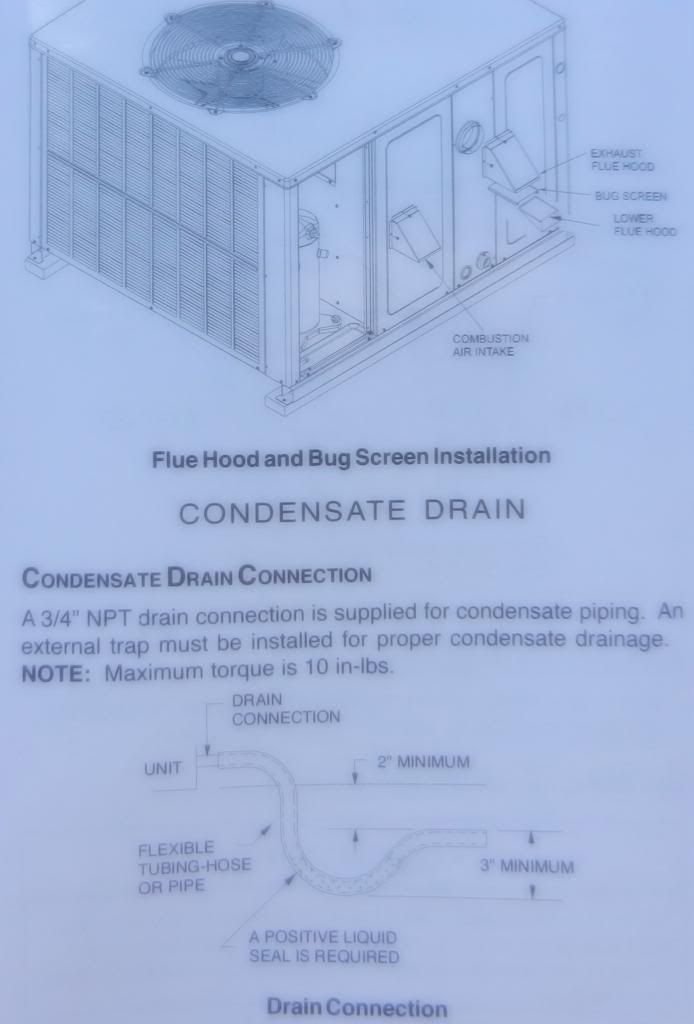There it is.
Gregg,
Please help me understand the difference a trap will make on a package unit as opposed to a split system coil. I asked around and the other inspectors haven't been requiring a trap either. The common held belief is that a trap is to prevent the escape of sewer gasses into a building or appliance. We allow condensates to drain outside or to a tailpiece which is protected by a trap. I see traps, traps with vents and straight runs. They all drain by gravity. You mentioned negative pressure and that's where you lost me. I would think that the air flow over the coils would create positive pressure. Now if that were the opposite and there is negative pressure, I don't understand how a trap seal would aid the flow by gravity.
Thanks



